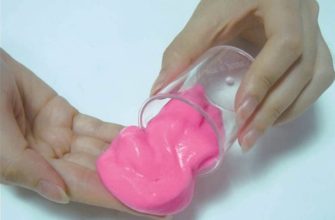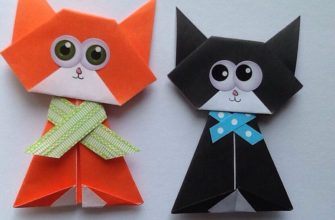In search engines, the query "how to make slime from PVA glue" is one of the most popular. Some people don't understand what's interesting about a lump of slime, but children, and many adults, are delighted with slimes. Slimes come in different colors: multi-colored, crunchy, flavored, transparent, and glittery. They are made from different ingredients. The PVA option is simple and affordable.
- Lizun, or slime - what is it
- Safety Rules for Making Slime
- What glue is best for making slime?
- Helpful Tips for Making Slime
- How to make a toy from PVA with your own hands
- PVA Slime with Sodium Tetraborate
- Slime made from Luch glue without sodium tetraborate
- Slime from wallpaper glue
- Slime made from glue and soda
- Slime made from PVA and toothpaste
- Slime made from glue and shampoo
- What to do if the slime doesn't work
- How to Store Homemade Slime
Lizun, or slime - what is it
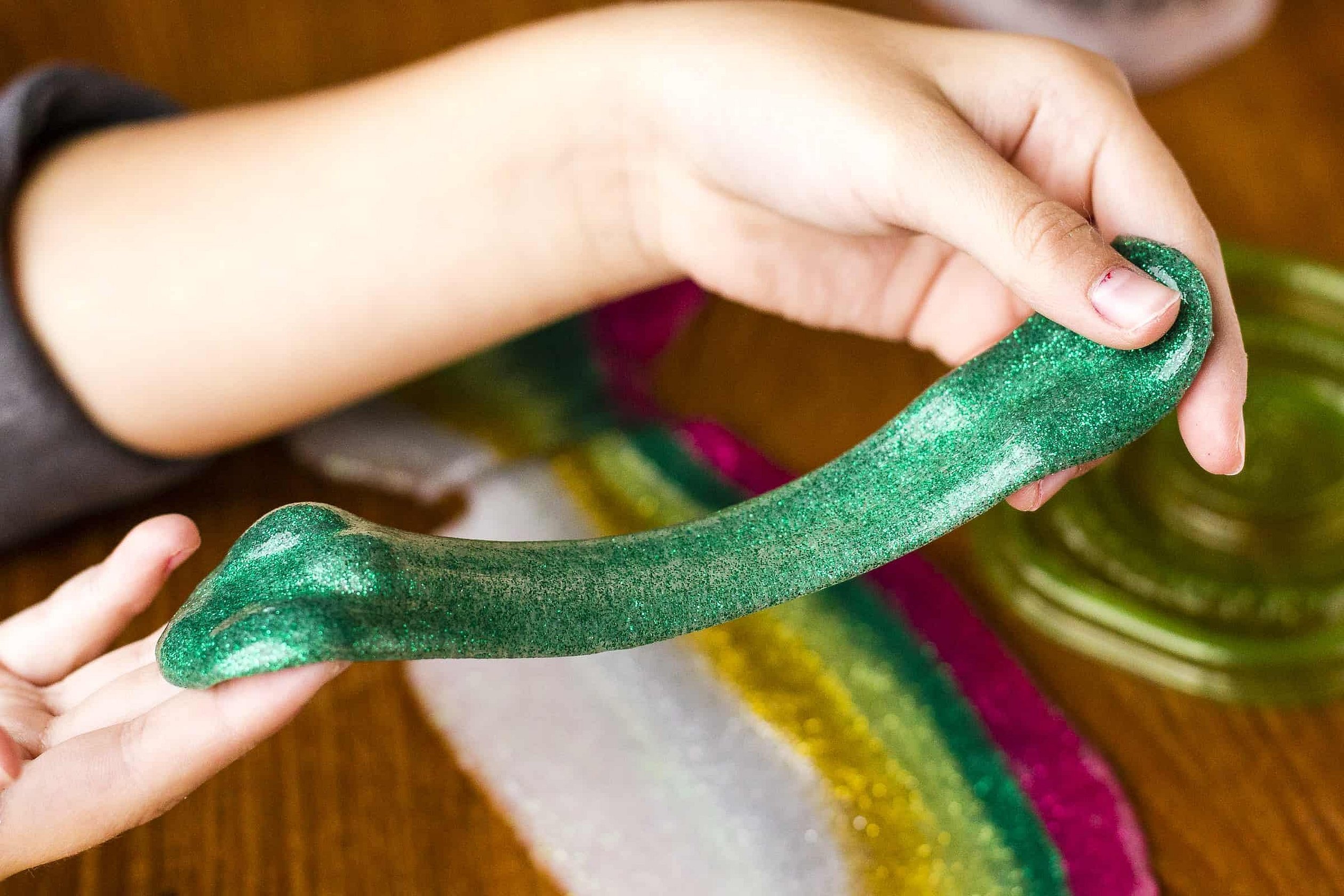
This is a toy made of a jelly-like material with physical properties similar to a non-Newtonian fluid (it changes viscosity and density when physically impacted).
The first slimes appeared in 1976, they were made from guar gum and sodium tetraborate (borax). Because of their green color and consistency, in Russia they were called lizuns - in honor of the eponymous character of "Ghostbusters".
At home, instead of gum (polysaccharide), take a polymer, and replace borax with any thickener:
- starch;
- boric acid;
- gelatin;
- contact lens fluid;
- naphthyzinum and others.
There are many slimes and kits for making them yourself in stores. The toys look different - shiny and matte, thick and fluid, single-color and multi-colored. The good thing about glue is that you can also make a variety of slimes at home.
Safety Rules for Making Slime
Boric acid salt (borax) is sold in pharmacies without a prescription. It is generally safe, but with prolonged contact with the skin it causes irritation, burns, allergies, especially if there are scratches or inflammation on the hands.
If borax accidentally gets into the mouth, eyes, nose, bronchi, it will cause a burn of the mucous membranes. PVA glue is low-toxic, considered safe, has good polymer properties, but if you make slime indoors, you can be poisoned by the fumes.
When preparing the slime, use rubber gloves and a mask (if working with powders). When preparing and playing with the finished slime, do not:
- inhale, taste the ingredients;
- rub your eyes with dirty hands;
- press slime to your face, lick it;
- play with it for a long time with bare hands;
- use slime that has dirt stuck to it.
Important! Before making slime, you need to make sure that family members are not allergic to its components.
It is not advisable for children under 6-7 years old to play with slime, because at this age children taste everything, glue and borax can cause poisoning. Also, they are not allowed to make slime on their own, only with the help of adults.
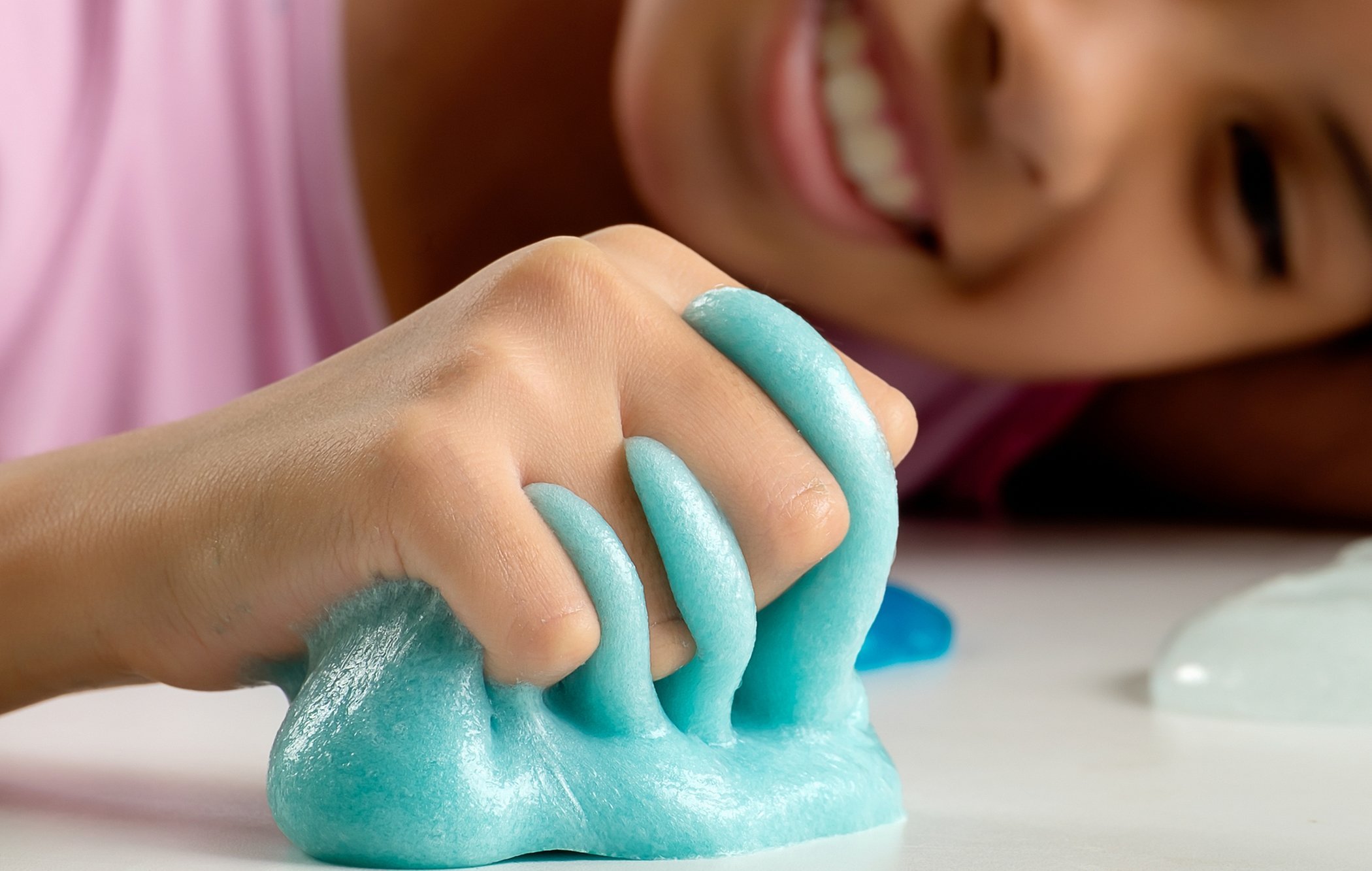
What glue is best for making slime?
Excellent slimes are made from different brands of PVA and office glue. They are quite safe and easy to find on sale. List of the best glues for the job:
- "Carpenter Moment";
- PVA-M (or super-PVA);
- Brauberg;
- Beam;
- Erich Krauser;
- Elmer's;
- Novokhim;
- puzzle glue;
- Goodmark.
Glue from other companies will do, but you can't use very thick or liquid glue - it won't give you the slime of the right consistency. Glue intended only for paper is also not suitable.
Helpful Tips for Making Slime
To mix the ingredients, take a deep bowl and a spatula made of a uniform material so that the liquid mass does not stain the table. For the first time, take a few ingredients in case the slime does not work out at first. Other secrets:
- if you add hydrogen peroxide, the slime will become fluffier;
- glycerin will make the slime less slippery;
- acetic acid (1-2 drops) will increase elasticity.
When making it, make sure that no foreign particles or other sticky substances get into the mass - this will ruin the consistency. The proportions are strictly observed, otherwise the PVA slime will not work.
How to make a toy from PVA with your own hands
Ingredients for slimes are chosen of high quality, not saving. The better the glue, the more flexible and durable the slime will be. There are many recipes with PVA, but any additional components - dyes, glitter - can be added to all slimes at your discretion.
For reference! Slimes can also be made from glue sticks, but they need to be melted first.
PVA Slime with Sodium Tetraborate
For preparation take:
- PVA glue - 200 g;
- borax - 2 tsp;
- food coloring.
Squeeze the glue from the tube into a deep bowl, gradually pour in sodium tetraborate, stirring constantly. When the mixture becomes homogeneous, add the dye. You can not add it, then the slime will be white. First, mix the mass with a spatula, and finally - with your hands. Finally, rinse the slime with water.
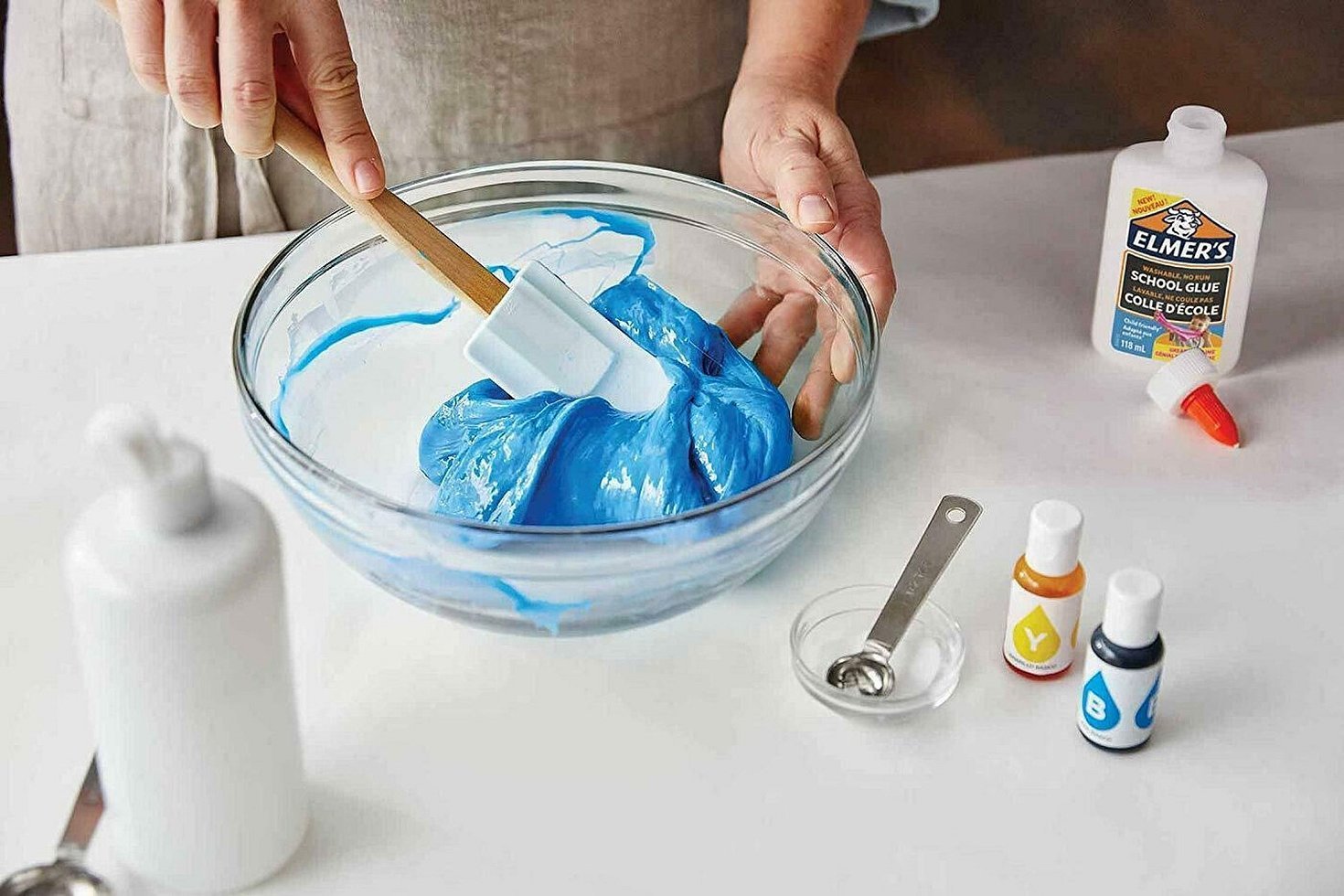
Slime made from Luch glue without sodium tetraborate
PVA brand "Luch" is great for making slimes. Glue (1 tube) is poured into a bowl and a borax substitute is added. It can be:
- washing gel in capsules (2-3 pieces);
- contact lens solution (1.5 tsp).
In the first case, it is enough to mix the ingredients, no dye is needed, since the liquid in the capsules is colored. First, add 2 capsules, use the third if the slime is not thick enough.
In the second option, first mix the glue and 1/3 teaspoon of soda. When the soda dissolves, add the liquid in parts and mix the mass until ready. You can add dye.
Slime from wallpaper glue
This slime will be thick and viscous. To make it, you will need:
- 50 g of wallpaper construction glue;
- 3 tablespoons of office glue or PVA;
- 50 ml water (cold);
- any thickener.
According to the special instructions on the package, dilute the wallpaper glue. Then, stirring continuously, gradually pour in the PVA. Having obtained a homogeneous mass, without lumps and grains, add the thickener and dye. The resulting slime is left for 30 minutes so that it reaches the desired condition.
Worth knowing! The drug naphthyzine works no worse than borax. To thicken the slime, 1-2 drops are enough.
Slime made from glue and soda
An elementary and safe version of slime with PVA glue. You will need 200 ml of water, 100 g of glue and 2 large spoons of soda. Dye and other things are optional. Then do the following:
- the glue is mixed with 100 ml of water;
- in a separate bowl, mix the remaining water with soda;
- the dye is added to the first container;
- Combine both parts and mix until you get a slime.
Soda is almost non-irritating to the skin and is less likely to cause allergies than sodium tetraborate.
Important! PVA glue "Titan" is suitable for this recipe, it makes the slime dense and resistant to moisture. But the use of wood glue is also acceptable.
Slime made from PVA and toothpaste
Take a homogeneous paste, without any particles, squeeze it into a cup. Then add glue there - 1/3 of the paste volume. Mix the mass and put it in the refrigerator for 40 minutes, then take it out and knead the finished slime.
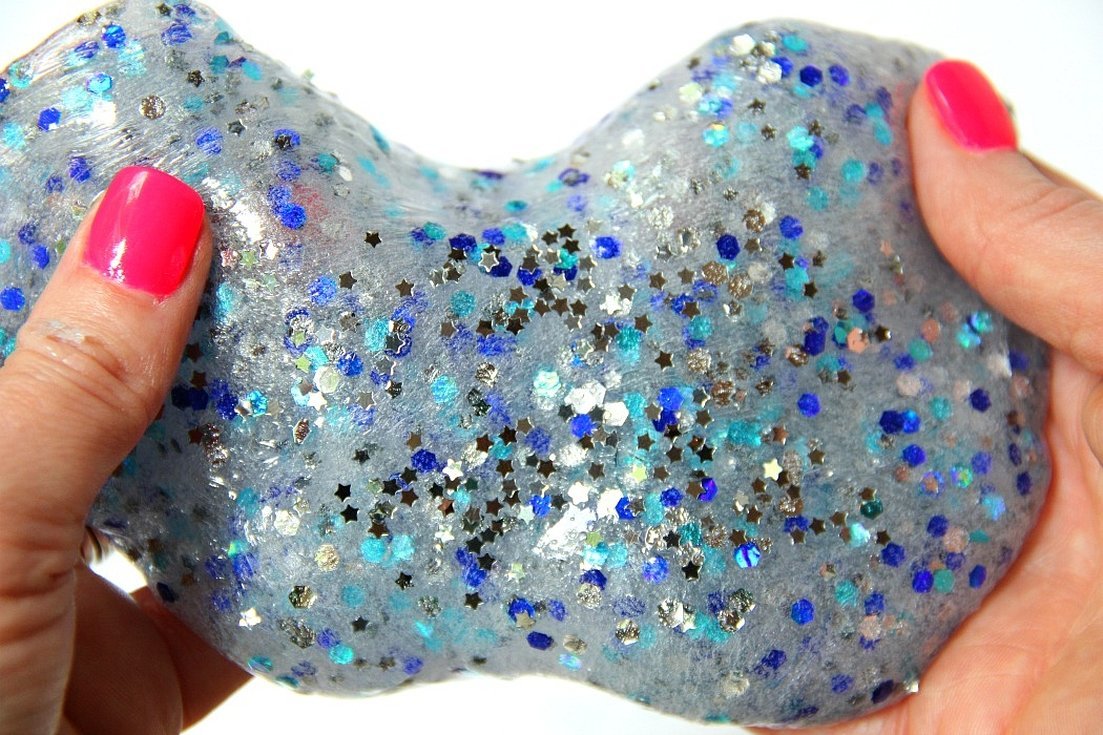
There is a recipe option with a glue stick. It needs to be cut, put in a bowl and melted in the microwave or on the stove. Toothpaste is squeezed into another container, then cooled glue is added in small portions. Stir until the mass becomes similar to slime, then put it in the refrigerator for 25-30 minutes.
Slime made from glue and shampoo
This slime will be pleasant not only to the touch, but also to the smell. To prepare, take:
- 100 ml shampoo (thick);
- 100-120 ml PVA;
- dye.
Pour the shampoo into a deep cup, add the dye and stir. Then add the glue in a stream. Stir the mixture continuously until it thickens. If after 10 minutes this has not happened, add another 1 or 2 tbsp. PVA.
If you want to make the slime matte, add 1-2 large spoons of starch. Pour 2 teaspoons of dishwashing liquid there.
Worth knowing! Instead of shampoo, add shaving foam. The slime will be soft, airy and fragrant.
What to do if the slime doesn't work
The consistency of the slime made from PVA glue should be such that it does not stick or tear, but is dense and stretches well.
Important! The quality of the slime directly depends on the expiration date of the glue - expired glue will produce a liquid or disintegrating slime.
If the slime with the addition of borax turns out to be liquid, a film mask will save the situation: it is mixed with the finished mass. If this is a slime with shampoo or shaving foam, regular salt will become a thickener, and soda goes well with contact lens fluid.
If there is too much sodium tetraborate, the glue starts to curdle, forms flakes, and the prepared slime becomes hard. Solutions:
- add more glue;
- pour in the film mask;
- heat and add some water;
- add cosmetic moisturizer.
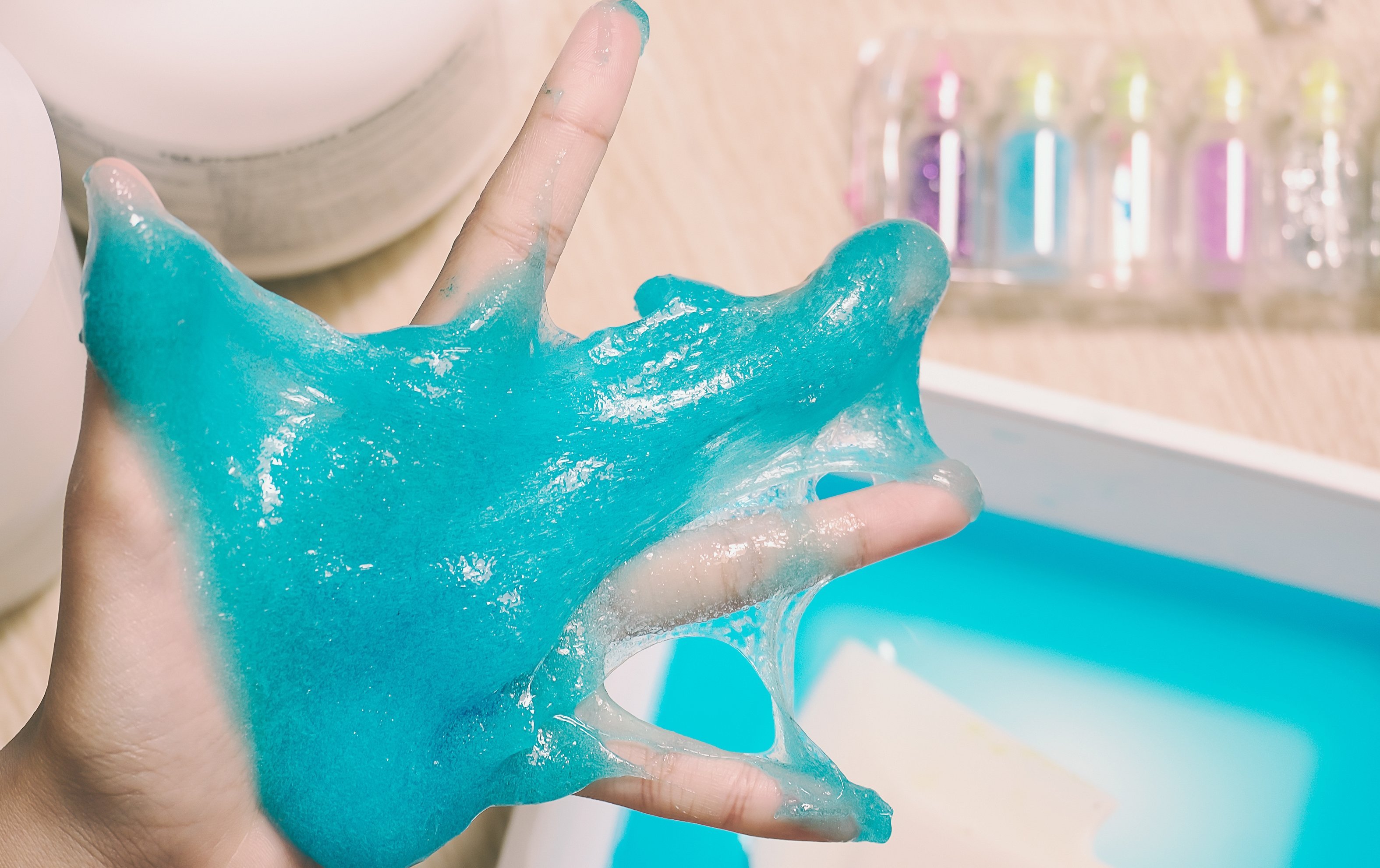
Some detergents, alcohol ingredients (e.g. perfumes), essential oils cause the slime to tear. The same effect will occur if the proportions in the recipe are not observed. In the first case, nothing can be done, just do not add these components next time. In the second case, adding glue or the same film mask will help.
How to Store Homemade Slime
If you follow a few conditions, the slime will delight you for a very long time. The first and most important thing is not to keep it in the open air. The slime is stored in a tightly closed container in the refrigerator, otherwise it will dry out. In the warmth, in the sunlight, it will begin to spread. For the same reasons, you cannot play with it for a long time.
After making a slime from glue, it is “fed” once every two weeks:
- pour some warm water into the slime container;
- add a pinch of salt;
- Place the slime into the container, close it and leave it for a while.
This is a universal procedure that will preserve the elasticity of the slime, prepared from any components. You also need to clean the slime after playing, do not put it on fleecy surfaces and do not give it to animals.
Slime made from glue is a safe entertainment for children and a relaxing toy for adults. Most of the ingredients are available at home, which means you don’t need to spend a lot of money, you can make different slimes by experimenting with the components.

